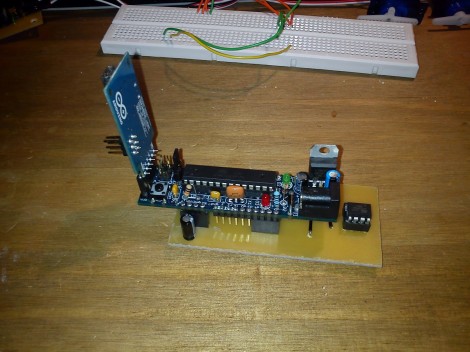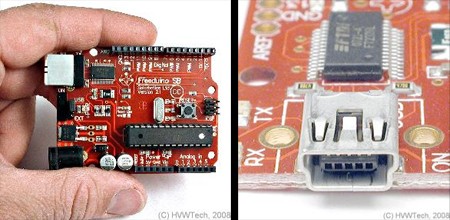[Acorv] wrote in to tell us about his latest hack, a robotic arm that writes with a marker. In the video after the break, the arm is set to copy whatever someone writes in a touchpad. As you might guess from this video, the hack is written up in Spanish, but it’s nothing your favorite translator can’t handle if you don’t speak the language.
This robot it the result of improvements on his first drawing arm ‘bot featured here. The basic kinematics stayed the same in the arm’s second iteration, but the resolution was greatly improved by using belts to achieve a gear reduction. The second build also features mechanical reinforcement with an Erector-set style building set known as [Mekanex].
A simple hobby servo moves the marker up or down, and control is achieved through, you guessed it, an Arduino with a motor shield! Although from a different time, the way this arm is used is reminiscent of a mechanical writing automaton from long ago. Continue reading “Hola! From A Spanish Speaking Drawing Arm”
















